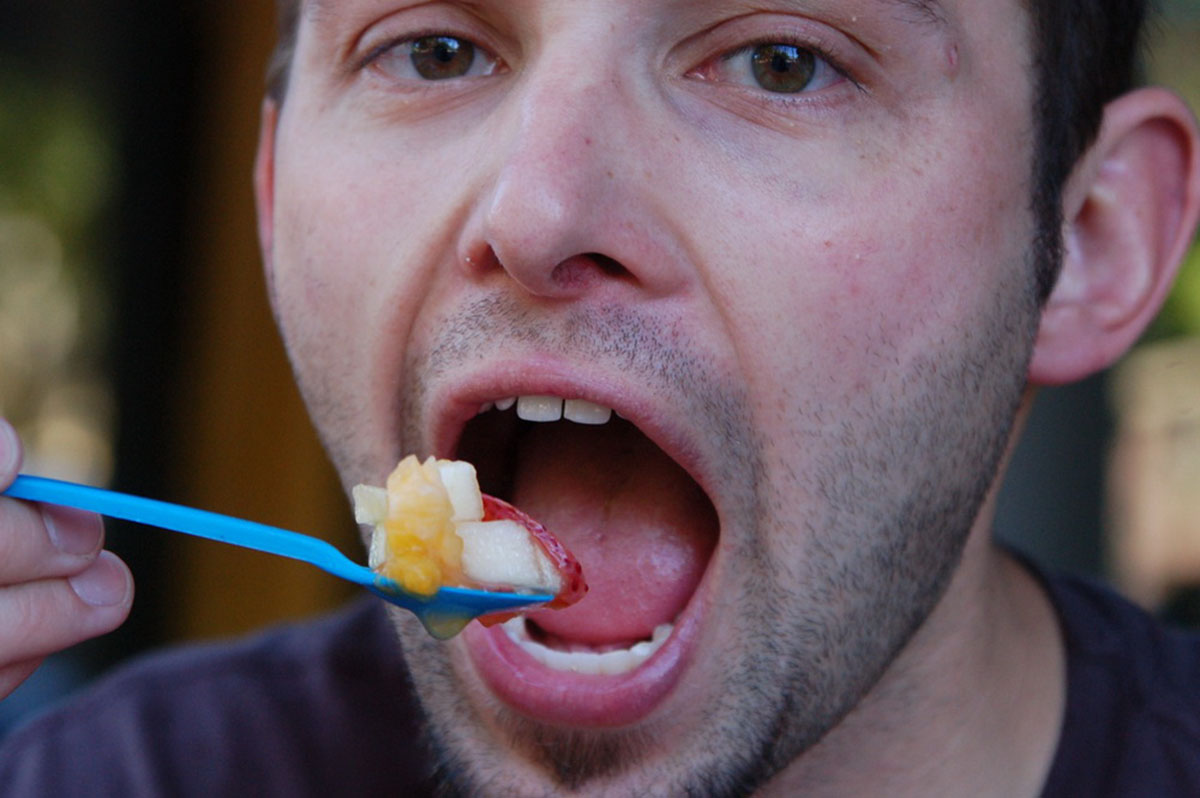Table of Contents
Article describes what mindful eating is, what the benefits are and gives a step by step guide to practicing this art.
While Preparing Your Food
- Take a moment to think about where your food came from, and if you have made the healthiest decision possible based on your budget and logistics.
- Use good cooking equipment, that’s helps maximize the nutritional content of your food and prevents nutrition losses
- Take care and pride in food preparation and remain focused and mindful of your ingredients and cooking methods.
- Inject some love and good energy into your food as you prepare it.

Before you eat
- Relax your body and mind by doing some basic breathing exercises
- Choose foods that are healthy and low in processed fat and sugar
- Connect with your feelings. What is prompting you to eat? Are you listening to your hunger signals? Notice any tensions or emotions that come up when contemplating your next meal. This will help you gain insight into the motivations that affect your eating patterns.
- Notice when you are naturally hungry - when your appetite is stimulated by the pure physical hunger for food. Notice any rumblings or contractions in your stomach. If you are not hungry, adjust your portion sixes appropriately but don’t skip any meals or snacks
- Take time to prepare your meal. Touch and smell the food and take care in arranging it on your plate. Set it out on a beautiful pate if you like. Watch that you put only the amount of food that is appropriate and set out to eat only what is on your plate.
- Sit down to eat your meal. Find a place that is peaceful and pleasing to you. Minimize eating on the run as much as possible.
During your meal
- Do not start eating your food right away. It helps to sit quietly and look at your meal. Enjoy the details- colours, textures and layers. It may help to say a little prayer over your food, send it some positive energy or simply contemplate it for a minute or two. This kind of behaviour also eliminates picking at food.
- Try closing your eyes as you take the first bite, noticing flavour and texture sensations.
- Chew your food thoroughly- about 15 times per mouthful. Try finish what is in your mouth before taking the next bite.
- Imagine the path the food is taking down your mouth, stomach and intestines and imagine all the nutrients being efficiently absorbed and utilised.
- Become aware of your whole body. Are your muscles tense anywhere? Notice how you are sitting, and what you are thinking. Are you thinking of the sensations of the food you are eating, or have other thoughts intruded? Gently bring your attention back and take a breath.
- Eat slowly and become aware of when you are full. If you are satisfied, stop eating. You should feel satisfied and satiated but not over-full.
See Also: Healthy Eating Starts At Home
After a meal
- Do not lie down or slump straight after a meal. Go for a light walk or make sure you are at least sitting up straight for two hours after your meal to aid digestion.
- Wait for any hunger signals- they should start three hours after your meal. This is when you’ll need a small snack to see you through to the next meal (unless of course you have just eaten dinner)
- Use a food journal to record everything you ate during the day. You might want to record any feelings that came up relate to food and eating.
- Photo courtesy of PublicDomainPictures by Pixabay : pixabay.com/en/apple-bite-diet-eat-face-female-15687/
- Photo courtesy of Matt Lemmon by Flickr : www.flickr.com/photos/mplemmon/2382928243


Your thoughts on this